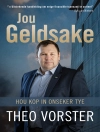As western governments issue increasing amounts of debt, the fixed income markets have never been more important. Yet the methods for analyzing these markets have failed to keep pace with recent developments, including the deterioration in the credit quality of many sovereign issuers. In Fixed Income Relative Value Analysis, Doug Huggins and Christian Schaller address this gap with a set of analytic tools for assessing value in the markets for government bonds, interest rate swaps, and related basis swaps, as well as associated futures and options.
Taking a practitioner’s point of view, the book presents the theory behind market analysis in connection with tools for finding and expressing trade ideas. The extensive use of actual market examples illustrates the ways these analytic tools can be applied in practice.
The book covers:
* Statistical models for quantitative market analysis, in particular mean reversion models and principal component analysis.
* An in-depth approach to understanding swap spreads in theory and in practice.
* A comprehensive discussion of the various basis swaps and their combinations.
* The incorporation of credit default swaps in yield curve analysis.
* A classification of option trades, with appropriate analysis tools for each category.
* Fitted curve techniques for identifying relative value among different bonds.
* A multi-factor delivery option model for bond future contracts.
Fixed Income Relative Value Analysis provides an insightful presentation of the relevant statistical and financial theories, a detailed set of statistical and financial tools derived from these theories, and a multitude of actual trades resulting from the application of these tools to the fixed income markets. As such, it’s an indispensable guide for relative value analysts, relative value traders, and portfolio managers for whom security selection and hedging are part of the investment process.
Inhaltsverzeichnis
Foreword by Henry Ritchotte Relative Value: a Practitioner’s Guide vii
Introduction
Chapter 1 Relative Value 1
Part I: Statistical Models 17
Chapter 2 Mean Reversion 19
Chapter 3 Principal Component Analysis 51
Part II Financial Models 113
Chapter 4 Some Comments on Yield, Duration, and Convexity 115
Chapter 5 Bond Futures Contracts 121
Chapter 6 LIBOR, OIS Rates, and Repo Rates 137
Chapter 7 Intra-Currency Basis Swaps 153
Chapter 8 Theoretical Determinants of Swap Spreads 157
Chapter 9 Swap Spreads from an Empirical Perspective 169
Chapter 10 Swap Spreads as Relative Value Indicators for Government Bonds 185
Chapter 11 Fitted Bond Curves 193
Chapter 12 A Brief Comment on Interpolated Swap Spreads 207
Chapter 13 Cross-Currency Basis Swaps 211
Chapter 14 Relative Values of Bonds Denominated in Different Currencies 223
Chapter 15 Credit Default Swaps 245
Chapter 16 USD Asset Swap Spreads versus Credit Default Swaps 273
Chapter 17 Options 299
Epilogue
Chapter 18 Relative Value in a Broader Perspective 349
Bibliography 357
Index 359
Über den Autor
Doug Huggins has been working in the fixed income markets in the US and Europe for 25 years. He managed the European fixed income relative value research group at Deutsche Bank in the late 90’s, when the group was voted best in its class for three consecutive years by the readers of Global Investor Magazine. He joined ABN AMRO in 2001 as Global Head of Fixed Income Relative Value Research, and subsequently became the firm’s Global Head of Hedge Fund Sales. In 2003, he started a proprietary trading desk at ABN, focusing on fixed income relative value opportunities. He continued a career as a relative value trader in the London offices of two global hedge funds: Citadel and Old Lane.
Doug has a Ph.D. in financial economics and statistics from the University of Chicago and has focused throughout his career on developing financial and statistical models for the purpose of identifying relative value opportunities in global markets. In both Research and Trading, Doug has applied these models successfully to generate attractive risk-adjusted returns for clients and the firms for which he’s traded. Doug is currently applying relative value models to the energy and agricultural markets as a managing director of Starsupply Commodity Brokers in London.
Christian Schaller earned a Ph.D. in Mathematics at the University of Bonn, Germany before learning the tools of the fixed income trade in the Relative Value team at Deutsche Bank, managed by Anshu Jain. Over time, he’s made a number of original contributions, particularly in the areas of principal component analysis and basis swap modeling. While responsible for Deutsche Bank’s research in Tokyo, he was voted ‚best relative value researcher‘ by customers in the Greenwich survey.
As Global Head of Leveraged Investment Strategy at ABN AMRO, Christian used his skill to translate mathematical theory into profitable trading positions for the firm’s most demanding clients, including hedge funds, proprietary trading desks, central banks, and other financial institutions. In 2004, Christian founded Shinzenbi, a consulting firm based in Japan, advising investment banks on the development, training, and management of quantitative research teams.
In early 2013, Christian and Doug created Quantitative Markets Analysis Ltd, a London-based firm helping financial organizations apply quantitative methods to identify relative value opportunities in global markets. In addition to financial software, Quantitative Markets Analysis provides consulting services, including staff training and the design and implementation of bespoke systems for pre-trade and post-trade analytics.












